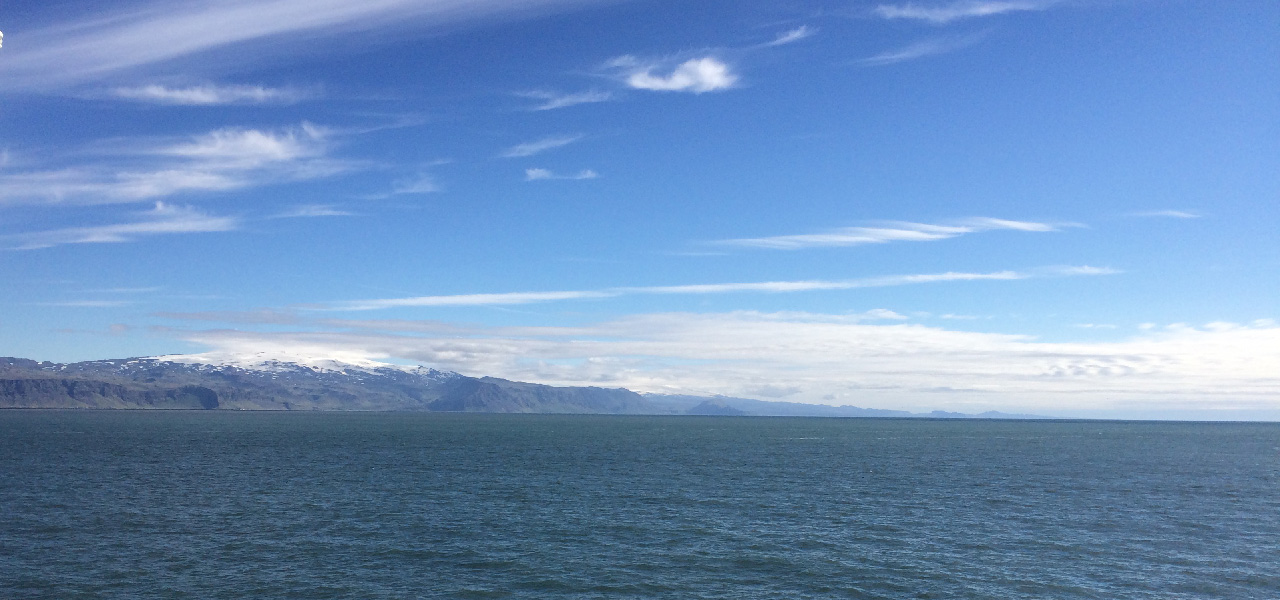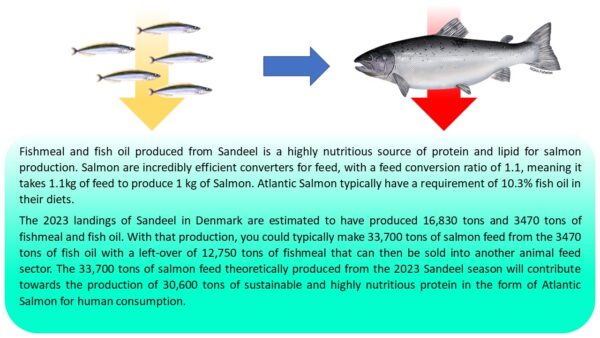
British Sandeel fishery closures set to impact European feed and food security
2023.10.3
The UK’s proposal to fully close the Dogger Bank to EU fishing for Sandeel is set to profoundly impact the EU fishing sector, extending to the aquafeed and salmon industries. Apparently driven by a conservation goal for the marine ecosystem, this move is going to contribute towards a significant surge in global fishmeal and fish oil prices amid an existing shortage fishmeal and fish oil shortage that has been exacerbated by closure of the Peruvian anchovy fisheries. This will notably strain European aquaculture, intensifying challenges within the global food security landscape.
This article explores the intricate dimensions of this impending closure, assessing its actual relevance for conservation and its broader implications for the European feed industry and food security.
Sandeels, small schooling fish abundant in the North Sea, play an important role as a forage species in the marine ecosystem. They serve as a primary food source for larger fish like cod and haddock, as well as seabirds such as puffins and kittiwakes. Moreover, Sandeels form a crucial link in the marine food web, transferring energy from plankton to higher trophic levels and this underscores the critical need for the sustainable management of this fishery, not only for seabirds but for related fisheries.
For commercial fishing, the Sand eel populations are categorized into 7 management areas. The proposed bans would imply a complete closure of British waters to Sandeel fishing in the management areas 1 and 4 (see map for details). The response from the EU to the British consultation on spatial management closures emphasizes the importance of a science-driven and proportional approach in managing Sandeel fisheries. Regrettably, it seems that EU responses are not taken into consideration even though stakeholders have a proven record of sustainable management of the Sandeel fishery while protecting the marine environment.

The current management system relies on scientific advice from the International Council for the Exploration of the Sea (ICES), which is considered authoritative for EU fisheries. This approach gains further endorsement through environmental certifications like the Marine Stewardship Council (MSC) and MarinTrust, both of which have previously endorsed the Sandeel industry, ensuring environmentally sound operations with minimal ecological impact. ICES, MSC and MarinTrust have all emphasized the importance of precautionary measures in Sandeel fishing, including catch quotas based not only on maximum sustainable yield but also on modeling to safeguard the broader ecosystem. Thus, the fishery already enacts precautionary measures and sets catch quotas to protect Sandeel populations and the wider ecosystem through the extensive use of models, predatory-prey relationships, and historical catch data. Adhering to this advice demonstrates a commitment to responsible and sustainable fishing practices.
While the closure of designated UK waters has a strong sentiment towards the conservation of seabirds, it’s vital to strike an objective balance by considering both economic and ecological impacts. Forage fish fisheries may affect prey availability, but the limitations of the available scientific evidence underscore the challenge of fully understanding the effects of fisheries closures on predator demography. For guillemot, razorbill, and puffin for example, A recent study showed there’s actually no clear evidence of negative or positive effects from forage fisheries or their closures.
Within Europe, over 99% of the total UK and EU value landed from UK waters has been landed by EU vessels, mainly Denmark where historical records demonstrate annual landings of approximately 81,000 tons of Sandeel. This underscores the profound historical, socio-economic, and ecological significance of this region and emphasizes the need for a delicate balance to ensure the preservation of both ecological stability and the socio-economic aspects associated with Sandeel fishing.

An overview of Sandeel landings from Denmark, the primary harvester of Sandeel in the EU, between 2015 and 2023 reveals that these landings originated from five out of the seven Sandeel management areas. Area 1 has a historical record of yielding the highest landings and remains a significant contributor to the European Sandeel quota.
The possible upcoming closure of Sandeel fishing in UK areas is poised to have a significant impact on both EU fisheries and European aquaculture production in countries such as Norway, Scotland, and others. European Sandeel fishing has historically been pivotal for the global fishmeal market, supporting industries reliant on fish-based products. An abrupt cessation of this practice could disrupt supply chains, impact jobs, and set off a chain reaction affecting local economies. To provide clear context of its expected impact, since 2015, the EUs main harvester, Denmark has landed a significant amount of Sandeel from Areas 1 and 4, totaling 860,000 tons, averaging out to 95,000 tons annually. Area 1 has historically been the most critical for area for landings, constituting about 732,000 tons, 85% of the total Sandeel landings. Of all the raw material that has been used in EU fishmeal and fish oil production since 2015, 11% of it comes from Sandeel landings sourced from area 1 and 4. This translates directly to 167,000 and 46,100 tons of fishmeal and fish oil produced directly from the sustainable exploitation of Sandeels sourced from area 1 and 4. Or 19,500 and 5,100 tons of fishmeal and fish oil per year on average.
The production of fishmeal and fish oil has been significant, forming a cornerstone of the global fishmeal market and supporting various industries. The potential loss of this vital fishmeal production source is highly concerning, particularly due to its unprecedented impact on food security, especially concerning farmed salmon production which has a huge role in the growing demand for sustainable protein.
Fishmeal and fish oil are vital components in aquaculture feeds, Fishmeal and fish oil are essential sources of limited nutrients like methionine and the omega-3 fatty acids, EPA, and DHA. The decline in fishmeal and fish oil availability across Europe because of the closures of British waters to the Sandeel fishery is expected to disrupt the supply chain for farmed salmon, posing a challenge to European and British food security.

Examining the 2023 Sandeel season, it is estimated that the Sandeels landed in areas 1 and 4 will contribute to the production of 33,700 tons of salmon feed which will support the production of approximately 30,600 tons of Atlantic salmon. Additionally, there will be a surplus of 12,750 tons of fishmeal available to be sold and utilized in other food sectors since fish oil is often the limiting ingredient in aquafeeds. To compensate for the high-nutrient density and palatability stimulating characteristics of fishmeal and fish oil ingredients, the aquafeed industry would either need to pay more for the increased price of fishmeal due to the decreased availability in Europe or find additional ingredients to provide these crucial nutrients in the future. An analysis of formulations across various species indicates that plant proteins and oils are now providing the bulk of the nutrients in aquafeeds, while fishmeal and fish oil provide those strategic nutrients that are hard to replace. However, recent studies have shown that this increased use of plant resources worsens the environmental footprint of aquaculture compared to the use of marine ingredients. Furthermore, sustainability concerns arise regarding the consumption of food-grade plant resources like soybean protein and rapeseed oil in aquafeeds.






